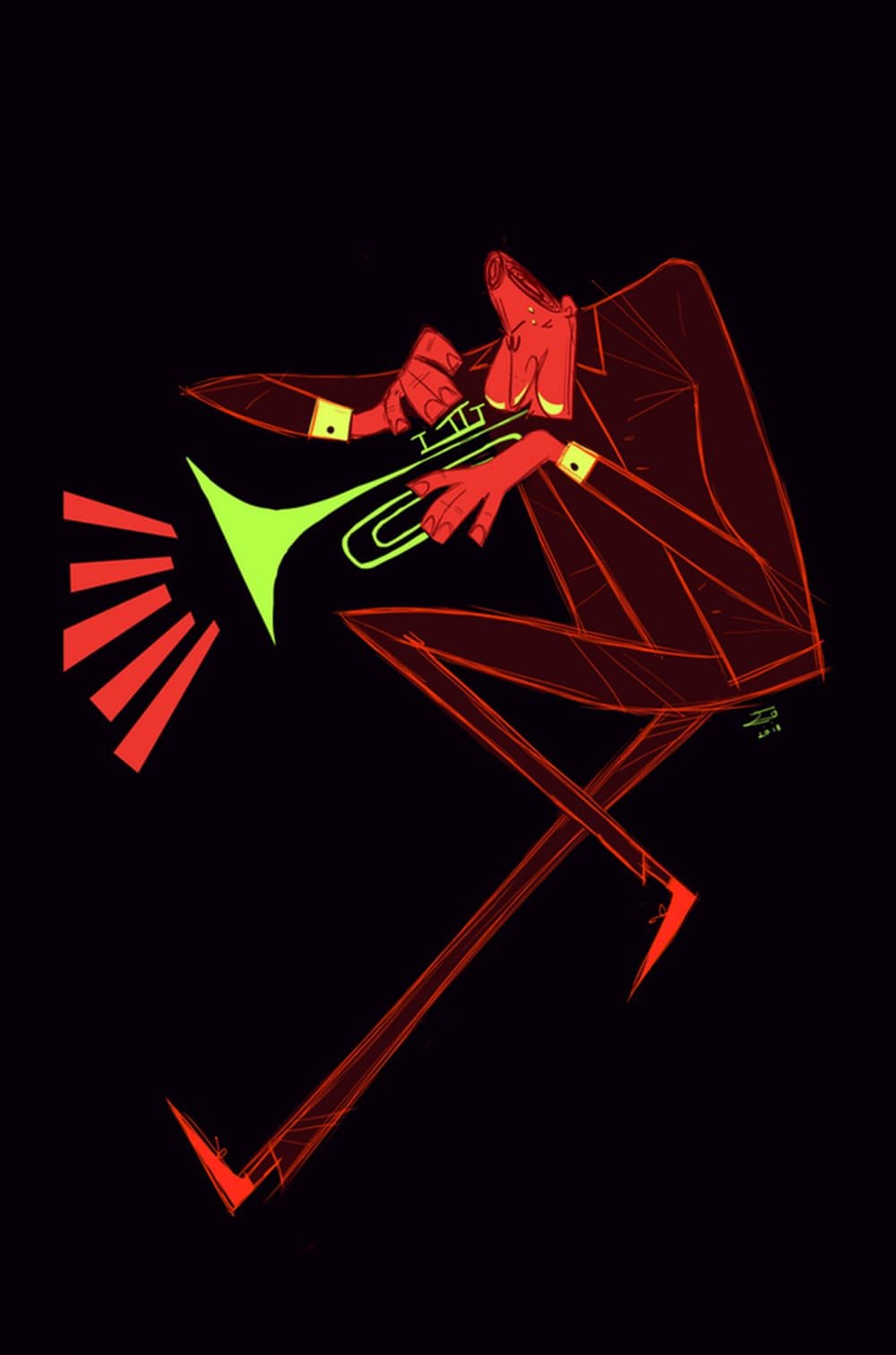Advertisement
The Axe Murderer Who Loved Jazz
Resume
Picture it: It's March 14, 1919. New Orleans. You pick up your copy of your local paper, the Times-Picayune, and read an extremely interesting letter:
Hell, March 13, 1919
Esteemed Mortal of New Orleans:
They have never caught me and they never will. They have never seen me, for I am invisible, even as the ether that surrounds your earth. I am not a human being, but a spirit and a demon from the hottest hell. I am what you Orleanians and your foolish police call the Axeman.
When I see fit, I shall come and claim other victims. I alone know whom they shall be. I shall leave no clue except my bloody axe, besmeared with blood and brains of he whom I have sent below to keep me company.
If you wish you may tell the police to be careful not to rile me. Of course, I am a reasonable spirit. I take no offense at the way they have conducted their investigations in the past. In fact, they have been so utterly stupid as to not only amuse me, but His Satanic Majesty, Francis Josef, etc. But tell them to beware. Let them not try to discover what I am, for it were better that they were never born than to incur the wrath of the Axeman. I don't think there is any need of such a warning, for I feel sure the police will always dodge me, as they have in the past. They are wise and know how to keep away from all harm.
Undoubtedly, you Orleanians think of me as a most horrible murderer, which I am, but I could be much worse if I wanted to. If I wished, I could pay a visit to your city every night. At will I could slay thousands of your best citizens (and the worst), for I am in close relationship with the Angel of Death.
Now, to be exact, at 12:15 (earthly time) on next Tuesday night, I am going to pass over New Orleans. In my infinite mercy, I am going to make a little proposition to you people. Here it is:
I am very fond of jazz music, and I swear by all the devils in the nether regions that every person shall be spared in whose home a jazz band is in full swing at the time I have just mentioned. If everyone has a jazz band going, well, then, so much the better for you people. One thing is certain and that is that some of your people who do not jazz it out on that specific Tuesday night (if there be any) will get the axe.
Well, as I am cold and crave the warmth of my native Tartarus, and it is about time I leave your earthly home, I will cease my discourse. Hoping that thou wilt publish this, that it may go well with thee, I have been, am and will be the worst spirit that ever existed either in fact or realm of fancy.
--The Axeman
What the heck, right? Would you even dare to NOT go to a jazz club that night?
And then nearly 100 years later, the letter in question pops up on one of the biggest subreddits, r/todayilearned:
Who was the Axeman? Is this true or an urban legend?
The answers are a little fuzzy. But here's what we know: There was a serial killer in 1918-1919 in New Orleans, dubbed "The Axeman" by the Times-Picayune. And the scene at the jazz clubs the following Tuesday night, March 18, 1919, was, as the kids today say, lit. Nobody was attacked that night.
And the Axeman was never caught.
Dirk Gibson, a professor of communication and journalism at the University of New Mexico, specializes in serial murders. (Also product recalls and outer space studies... because, why not?).
He says as many as a dozen people were attacked in New Orleans with axes, from 1918-1919. Most of them were Italian grocers, attacked with their own axes.
The Times-Picayune, played up these murders to the salacious hilt, says Gibson. The stories were often speculative and fantastical, tapping into fears of the supernatural and the occult.
It spooked the city.
In some ways, it seems like the Axeman's letter could have only worked in New Orleans. Post-Civil War, the city's demographics completely changed, says Bruce Raeburn, curator emeritus of the Hogan Jazz Archive at Tulane University.
The large plantations had been broken up after the North's victory and thousands of African-Americans poured into the city, living with whites, Creoles, Jewish people and more. And the new music of the time and the place — jazz — reflected the multicultural experience.
"It was a young people's music, and many of the neighborhoods that produced jazz musicians were what demographers would call a crazy quilt," says Raeburn.
"To some extent, jazz was heading in the opposite direction of segregation, which was trying to separate people," he says. "For young people in New Orleans in 1918, 1919, they really gravitated to jazz and the blues."
And, it seems, so did the Axeman.
"It was a young people's music, and many of the neighborhoods that produced jazz musicians were what demographers would call a crazy quilt."
Bruce Raeburn
There's a theory that maybe the Axeman was getting revenge against Italian-Americans — the majority of his victims — because black jazz musicians weren't getting their due credit. The first "jazz" recording, in 1917, was led by an Italian-American named Nick LaRocca, says Eric Hofbauer, a jazz guitarist and composer who's affiliated faculty at Emerson College and the Longy School of Music of Bard College.
"It's a controversial record in jazz history specifically because there was no improvisation," says Hofbauer. It was jazz-like, but not jazz. But it led to some saying, including LaRocca himself, that LaRocca and his band, The Original Dixieland Jazz Band, invented jazz.
Was the Axeman trying to get revenge for LaRocca stealing credit? Probably not, says Hofbauer.
He has a second theory that the Axeman was upset about the shuttering of the New Orleans red-light district, Storyville, in 1917. The Navy shut down everything in the neighborhood — gambling dens, brothels, and dance halls and clubs, where jazz music flourished.
Or... maybe... the Axeman was just the greatest marketer for jazz of all time.
Or, maybe the Axeman was defending jazz's honor? In the summer of 1918, the Times-Picayune ran an editorial trashing jazz, saying it was not even music, just noise.
Or... maybe... the Axeman was just the greatest marketer for jazz of all time.
"That [was that] one night where... every jazz band in New Orleans was working and had a gig either at home or at a dance hall," says Hofbauer. "So he probably helped all these jazz musicians actually get paid, finally, that year."
So 10 out of 10 points for good style, but minus several million for good thinking. (*)
Miriam Davis, who wrote "The Axeman of New Orleans: The True Story," also has some thoughts.
And she thinks the letter in the paper was NOT written by the Axeman.
"The Axeman was almost certainly not a well-educated person. He was working class. He was probably a burglar," she says. "This was not a person who would be, at that time, well educated, but the person who wrote that letter was extremely educated."
And we don't know who he was, says Davis. There's a popular theory that he was a man named Joseph Momfre, who ran a blackmailing gang in New Orleans at the time. But Miriam doesn't think so — Momfre was in prison when most of the attacks occurred.
She does have some interesting thoughts on the Axeman's victims, who were, as I mentioned, mostly Italian-Americans or Italian immigrants.
Most of the Italian immigrants in New Orleans at that time were from Sicily and had pretty dark skin. They didn't fit neatly into the "white or black" categories and were willing to do jobs that whites weren't. And as a group, they did well economically.
"My suspicion is that there's some kind of racial or ethnic anxiety, that he perhaps has this resentment of these not-quite-white foreigners who are doing better than he thinks they ought to be doing," says Davis.
She thinks a man named John Joseph Dávila wrote the letter. He was a musician and jazz composer, and right after the letter was published, he came out with a composition called "The Mysterious Axeman's Jazz (Don't Scare Me Papa)."
"He made a pile of money off that song," says Davis. "And I just think that he's the most likely suspect [for the letter]."
An old-time viral marketing campaign, perhaps.
By the way, Davis says to protect yourself from irrational fear you should get a big dog who will bark in the middle of the night if anyone breaks in. BRB, checking PetFinder for the biggest dogs they have.
Thanks to Redditor u/rk_art for this week's artwork. You can follow him on Instagram at @rahulk95.
We're on Twitter at @endless_thread and on Reddit as /u/endless_thread. Subscribe to the podcast with Apple Podcasts, Stitcher, RadioPublic or RSS.
